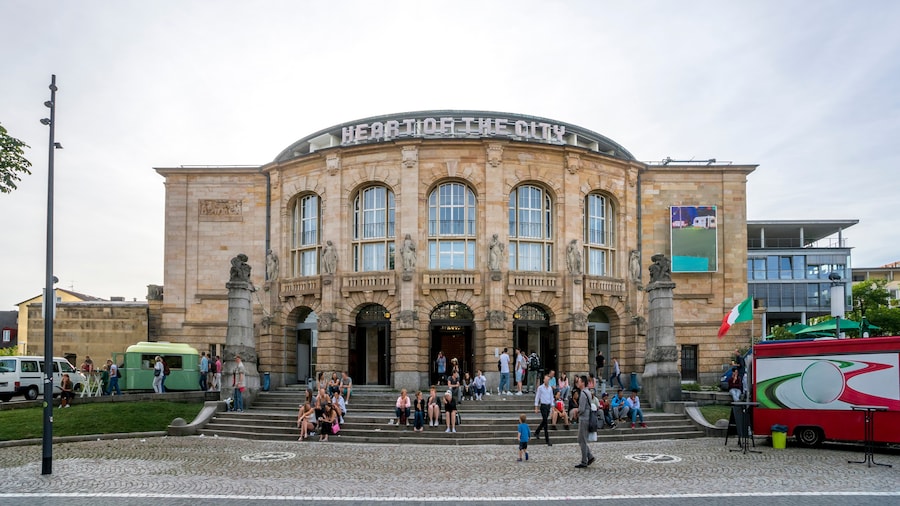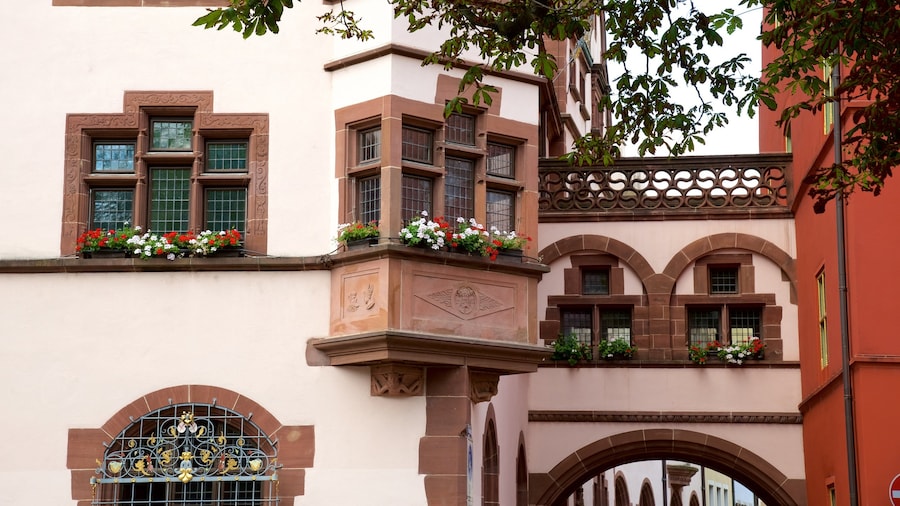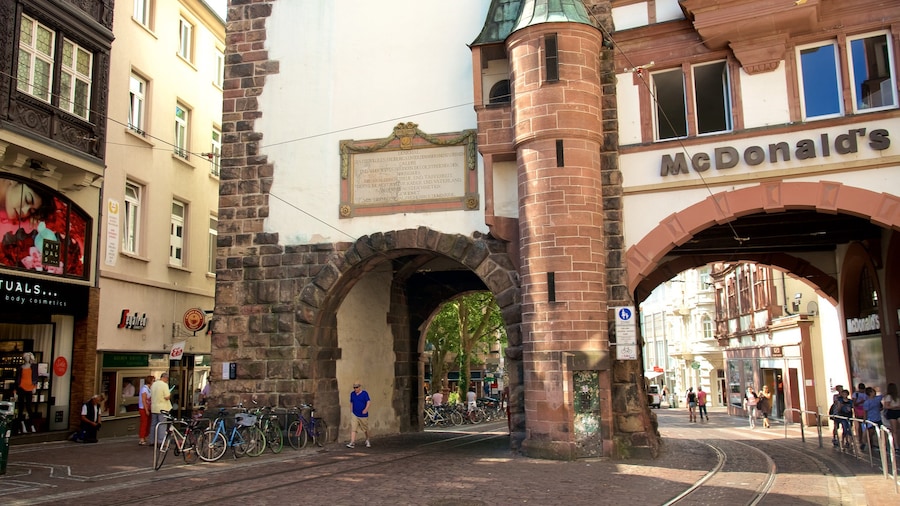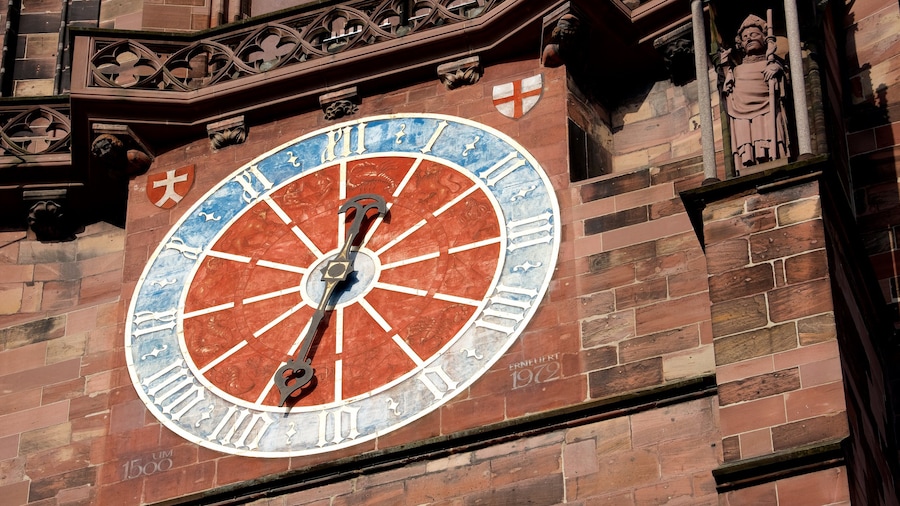You’ll know you’ve arrived in Freiburg’s Old Town when you spot this distinctive sight, usually dotted with local students and commuters.
When the Blue Bridge was first built in 1886, it was inaugurated as the Kaiser Wilhelm Bridge. Before long, the official name was abandoned and the people of Freiburg simply referred to it by its distinctive blue-painted iron arches: the Stühlingerbrücke or Blue Bridge.
Now officially renamed Wiwili Bridge in honor of Wiwili, Nicaragua, Freiburg’s sister city, the Blue Bridge still holds the imagination of the city by its color. See its bright blue contrasting beautifully with the red brick and warm colors that define much of the rest of Freiburg’s architecture.
Walk across the bridge from the train station to watch the arches frame the Sacred Heart Church at the other end. Rent a bike and cycle across along with many Freiburg residents more than 10,000 people use the bridge each day. Bring binoculars to spot trains on the tracks below or shoot photographs in one of Freiburg’s most uniquely picturesque locations.
Pay your respects at the memorial commemorating the deportation of Jews from Freiburg during the 1930s, represented by a bronze statue that looks like a coat forgotten on the side of the bridge. Pause before the memorial to Bernd Koberstein and Albrecht Pflaum, two Freiburgers who were killed by Nicaraguan Contras during a humanitarian relief mission to Wiwili.
The bridge is one of the most common places to go in the city. Chat with the students that clamber onto the 13-foot-tall (4-meter) arches to drink beer and hang out.
The Blue Bridge or Wiwili Bridge is on the western edge of Freiburg’s Old Town, connecting the district to the rest of the city. Walk from the landmark Bertoldsbrunnen (Bertold's Fountain) in 11 minutes or take the tram in 9 minutes. Walk or take the tram from the Freiburg Cathedral in 13 minutes. The bridge is closed to cars, but there is a bicycle parking station at one end. Limited metered parking is available at the train station and street parking is available in the streets to the west. The bridge is accessible all day.



















